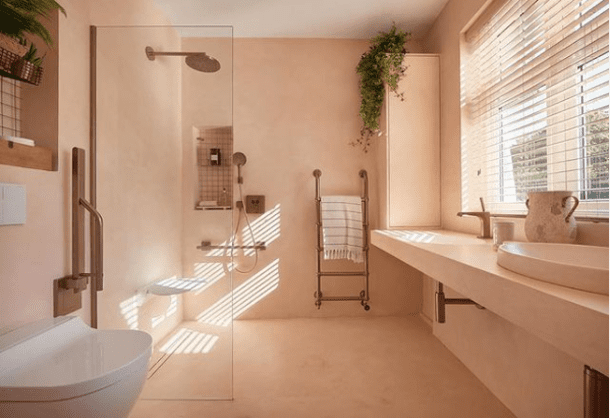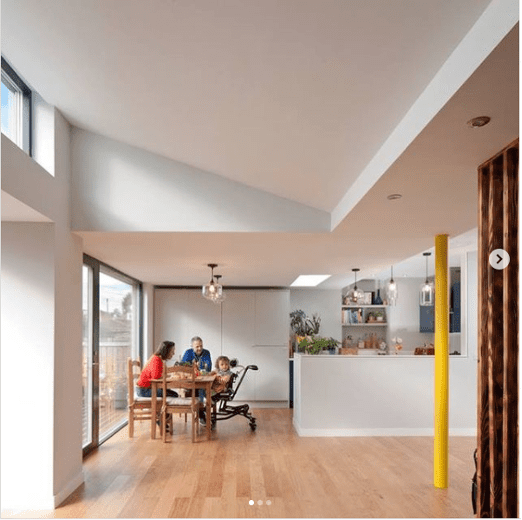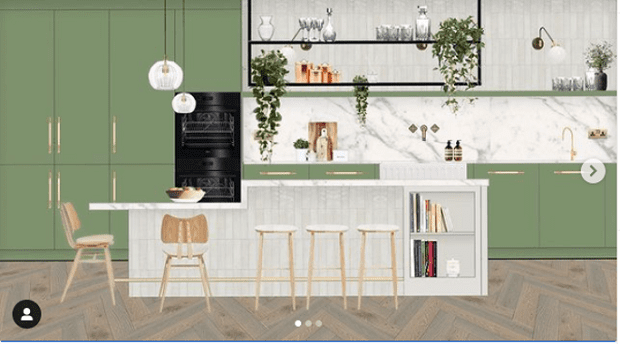
Vaila Morrison RIBA, our resident Inclusive Design Expert, is an architect, mum, and carer, who is passionate about inclusive design and sustainability.
In this blog, Vaila shares some beautiful real homes that prove function doesn’t have to compromise on style.
What do you visualise when you think of an accessible home? Freedom? Independence? Style?
Unfortunately, people often think they have to choose one or the other; and in many people’s minds the idea of home adaptations conjures the image of institutional drab instead of inclusive chic.
This really saddens me, because accessibility and style are absolutely not mutually exclusive.
In my mind, inclusive design makes for the basis for great design, and should be celebrated and valued by all of us, not just those who need it in their homes at the present time. Don’t forget at some point – even the distant future - we will probably all need a little help getting around our abodes.
However, inclusive design seems to be an underrated asset, and is seldom glimpsed in mainstream media. This does little to dispel the image that adaptations will mean a compromise in home style. This puts a lot of people off making changes to their homes and they struggle on with the status quo.
But it doesn’t have to be so. There are lots of clever ways that accessibility can be designed in the home so that there’s no (metaphorical) neon flashing wheelchair logo hovering above your door.
Ideas for all styles and needs.
Inclusive design shouldn’t be seen as separate from design trends, so I think it’s fabulous when we see some inclusive homes shared that fit current design trends, to help show what can be done.
Looking at guides such as Living Etc magazine’s 2021 Interiors Trend Guide, green seems to be a winner this year, including green kitchens.
This gorgeous plan by Katie Woods at @thesmurfhouse is totally on-trend. The kitchen doesn’t scream ‘adapted’ but subtle things like a lower section of breakfast bar, make it accessible for wheelchair users and people who prefer to work from a seated position. Lower level storage favoured over high-level cupboards put things within easy reach from a wheelchair. These tweaks which reduce fittings at higher levels will also make the space feel more roomy and light.
On the subject of colour, it seems Paralympian and presenter Ade Adepitan and musician Elle Exxe, with a helping hand from @motionspot, were ahead of the game when they created their stylish pink bathroom design last year. A beautifully designed en-suite for a wheelchair user and non-disabled person alike, with his and hers basins mounted at slightly different heights and a beautifully spacious roll-in shower.
When people are looking for a more accessible home, bungalows are often top of the list, but actually, many of them are not terribly accessible; steps at the front door and narrow corridors are just some of the challenges. I love this contemporary revamp of a typical bungalow by award-winning designers Chambers McMillan Architects showing how a bungalow could be transformed to create a light and bright open plan family home.
Hints, tips and hacks
There are many ways to make your home more inclusive without major refurbishments or building work. I think it’s crucial to share all of those things too, as it can be so hard to know where to start. Design can improve the home environment for people with sensory needs as well as mobility impairments, so it’s also great to see all the cool (and fast-developing!) assistive tech that’s now possible. I think we all just need those sparks of inspiration to get us going! Sometimes these can be hints and tips for daily living, hacks and even equipment upcycles.
Pretty Good Project is a great source of tips; for example, if you have trouble getting in and out of a low chair, why not replace the legs on your favourite chair to raise its height rather than opting for something specialist?
Grab rails, particularly at the front door, can make people feel singled out in their street, and in some circumstances, it can feel as though you are being highlighted as a vulnerable person. I love a multipurpose design, such as a grab rail that can double as a towel rail or even a loo roll holder; this grab rail come plant holder is such a simple but effective way of making something functional into something decorative and subtle.
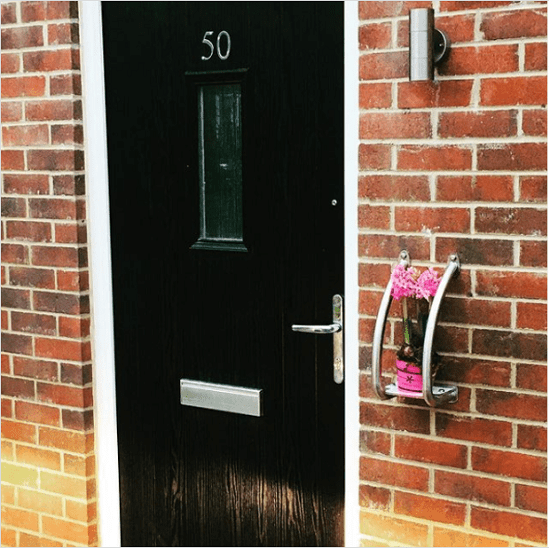 Credit: @invisible_creations_
Credit: @invisible_creations_
Another thing that I love to hear of are ideas shared about mainstream products that are actually super inclusive. A great example of this that springs to mind are coffee makers, which would be at home in any kitchen, but which are so much safer than handling a kettle full of boiling water for anyone with mobility impairments to maintain independence in the kitchen.
Join in the conversation
Whether you have any access needs within your household or not, it’s always great to think about how we can all benefit from inclusive design. My hope is that the more people talk about their ideas and solutions the more it will become the norm. The must-have for good design. That there’s no need to put things off and you should go ahead and make your home work for you.
Inclusive design is for everyone, and I’d encourage you to look around and try to spot things that everyone can use. Sometimes it’s the most unnoticeable things that make the most difference, like a gradually ramped entrance instead of a step. Design can mean the difference between being independent or having to ask for help and feeling like a nuisance. Good inclusive design is more than just aesthetics, it can change equality in society.
Where do you go to find ideas?
Myself and fellow inclusive design enthusiast Vicki Tynan of Wheel Chic Home met a number of years ago and bonded over our frustration about the lack of inspiration there was for people who wanted to make their homes more inclusive - either through disability, older age or to make their home more welcoming to all of their friends and family.
We both love browsing home design magazines, watching home design shows and following home and interior hashtags on social media, but we found it was a mission to find any great ideas for anyone with access needs, and very little to inspire anyone not specifically seeking home adaptations to even consider inclusive features. There was no go-to place to look or to direct people to, so we decided to create a hashtag on Instagram to start conversations around inclusive and accessible design and disabled adaptations, and thus #InclusiveChic came about. The hashtag provides a way for people to find ideas and to share their own solutions.
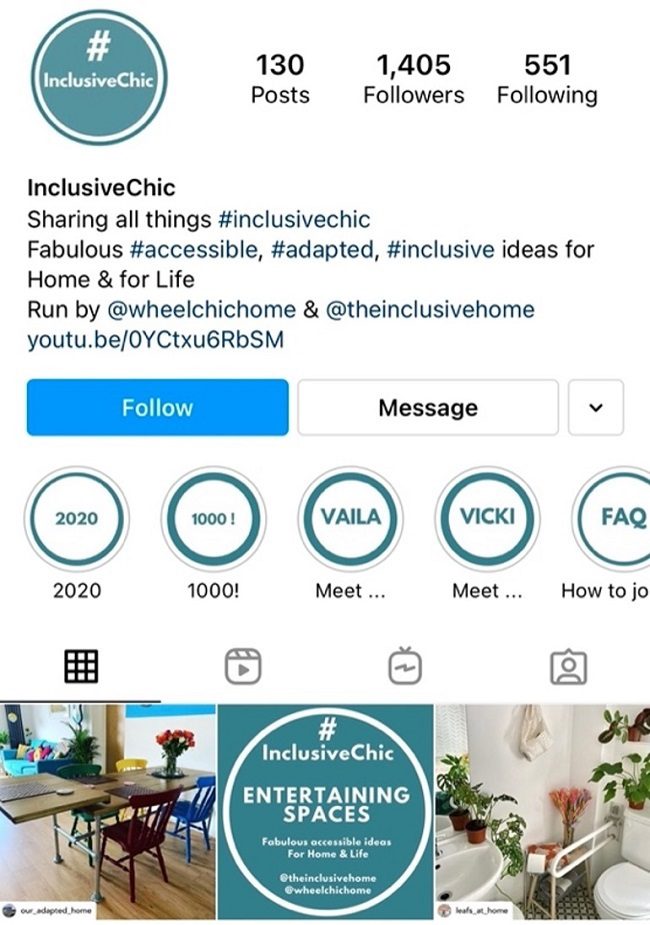
You can view the public posts on the #InclusiveChic hashtag and on the @InclusiveChic Instagram account to get some ideas even if you are not signed up to Instagram.
If you are on Instagram, it’s easy to join in by following the hashtag. To share your own ideas with the community, just add the hashtag #InclusiveChic to your posts and/or tag the @InclusiveChic account. A theme runs every couple of weeks, but you don’t have to stick to the theme, the more inclusive design ideas the merrier, so just share away!
So, what are you waiting for? Keep on being you whilst making the world a little more inclusive.
Care to Share?
Stay up to date
Latest Blogs

A stairlift to match your home interior

Little-known gardening laws that could land you a fine of up to £5,000
How to Choose the Best Stairlift Rail

How long will your stairlift last?

Stannah named a Which? Recommended Provider

Servicing Your Stairlift
What is the weight capacity of a stairlift?

Tricky brain teaser tests how quickly you can spot the common hazard that leads to falls
Stairlifts made for you
All our stairlifts whether straight or curved are customised to suit you and your home so call now to arrange a visit to get your FREE personalised quote!

